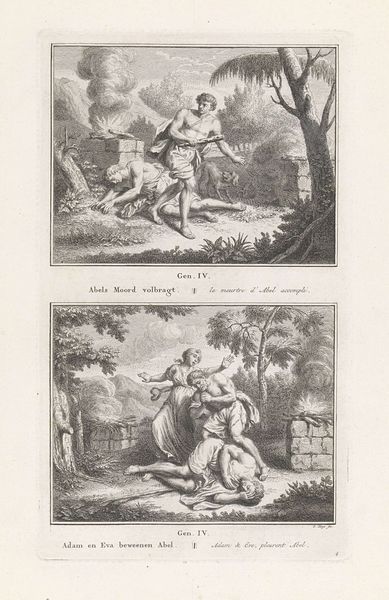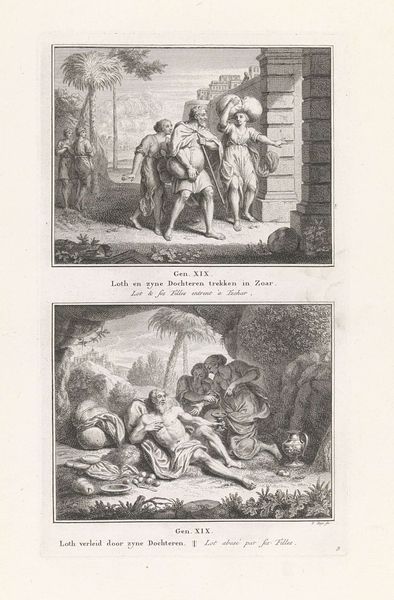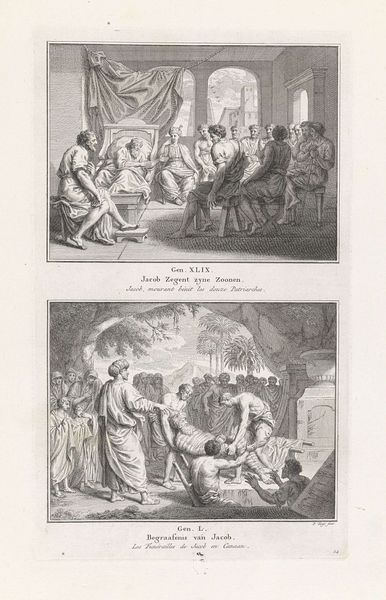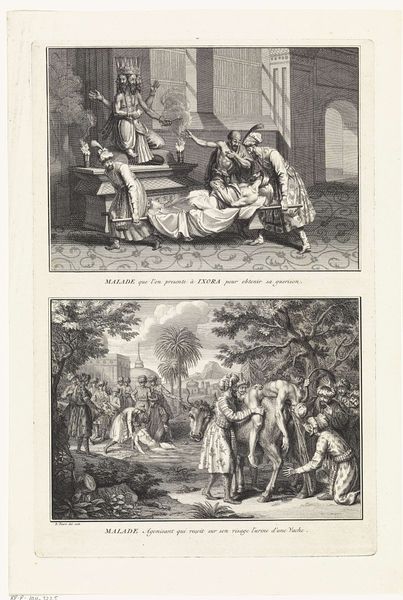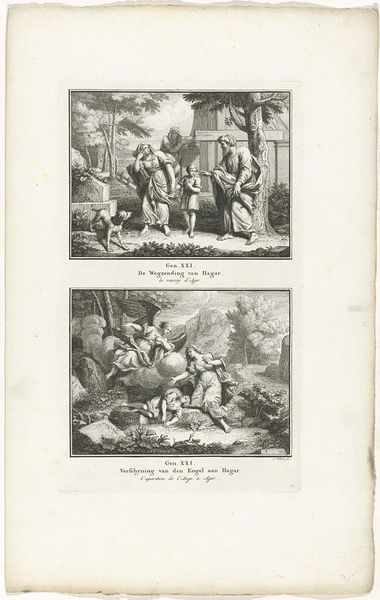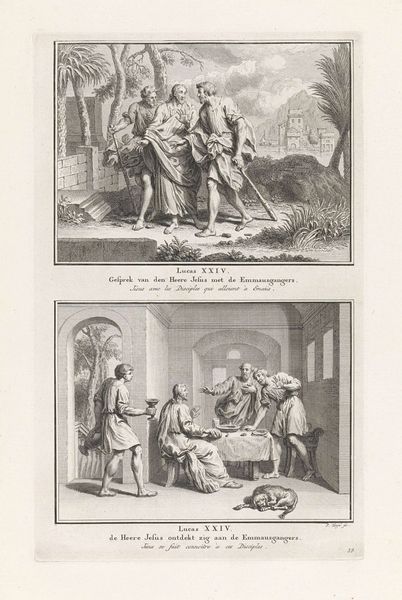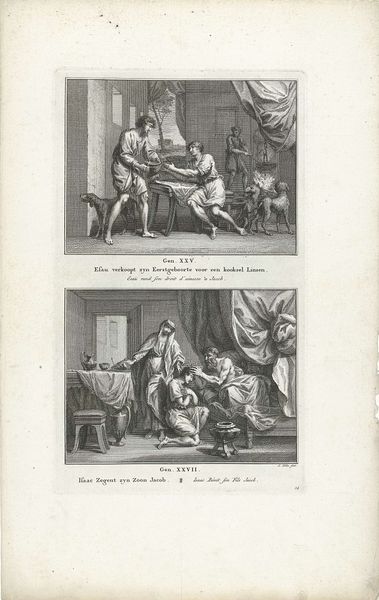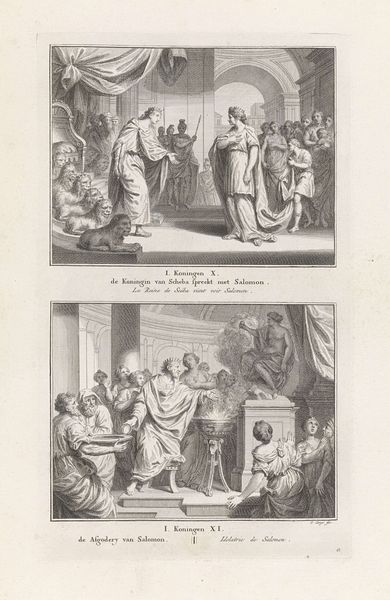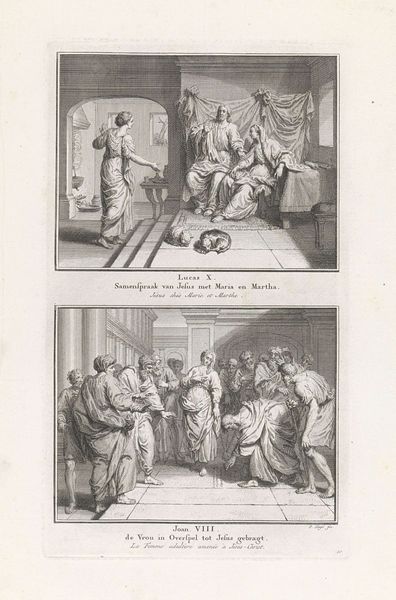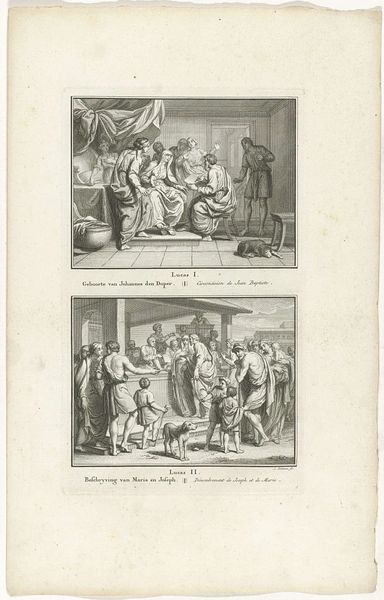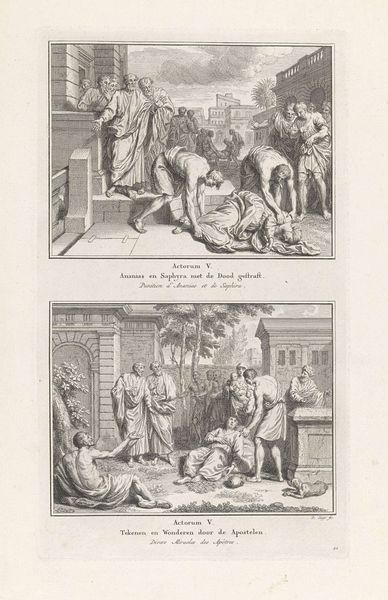
print, engraving
#
narrative-art
#
baroque
# print
#
history-painting
#
engraving
Dimensions: height 326 mm, width 196 mm
Copyright: Rijks Museum: Open Domain
This engraving, made by Pieter Tanjé in the 18th century, is printed on paper, a material that democratized image-making. Engraving is an intaglio process, meaning the image is incised into a plate. This is achieved by manually cutting lines into a metal surface with a tool called a burin. The plate is then inked, and the surface wiped clean, leaving ink only in the engraved lines. When paper is pressed against the plate, the image transfers. This skilled, laborious process allowed for the reproduction of images on a mass scale, serving a growing market for accessible art. Consider the amount of labor invested in this print. The engraver's skill is evident in the detailed lines that define form and texture, requiring immense patience and control. In its time, this print made religious narratives accessible to a wider audience, reflecting a shift in the consumption and distribution of art, influenced by the rise of capitalism. Recognizing the materials, methods, and social context helps us appreciate the full meaning of this artwork and challenges traditional distinctions between fine art and craft.
Comments
No comments
Be the first to comment and join the conversation on the ultimate creative platform.
